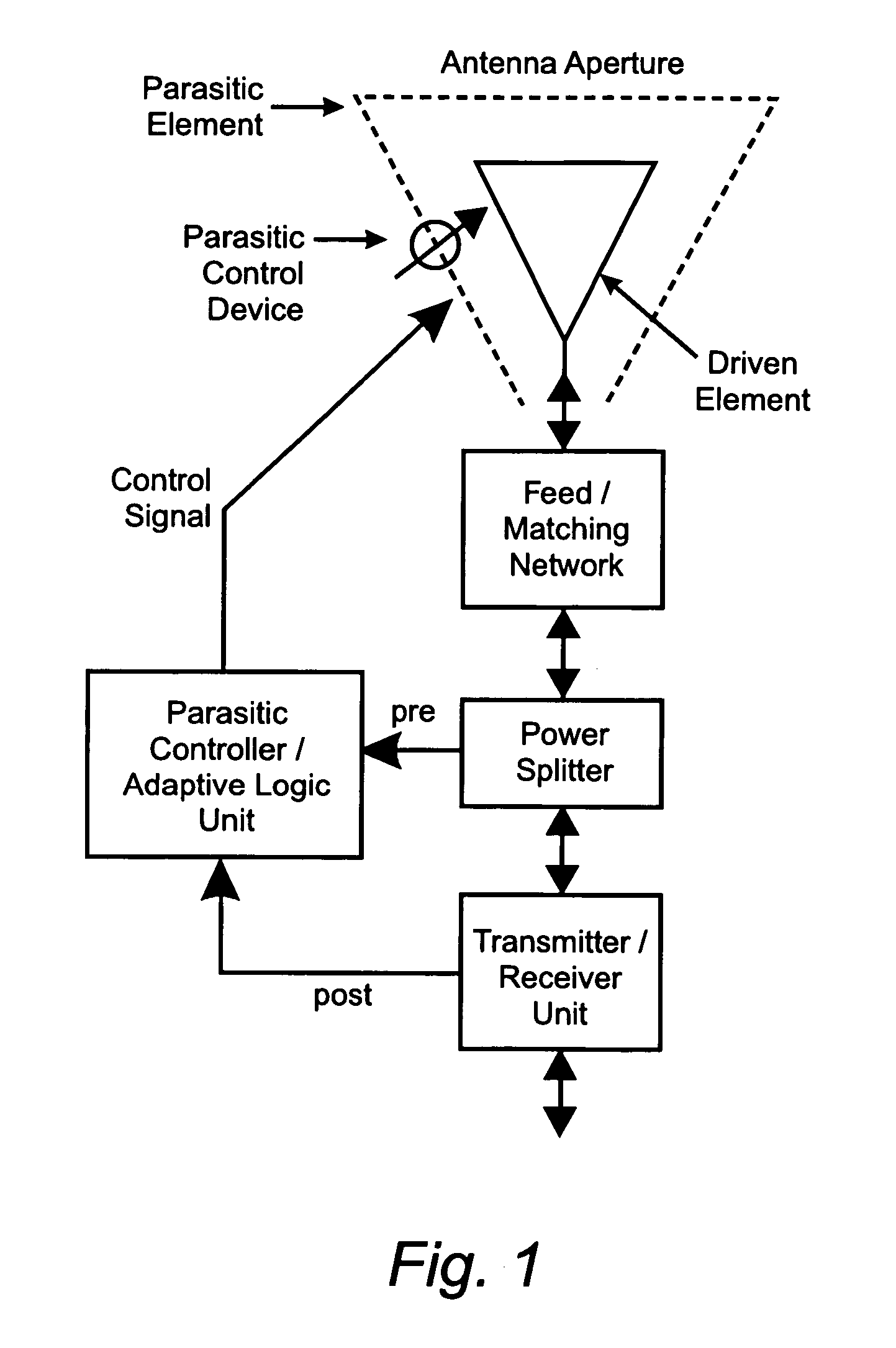Reconfigurable parasitic control for antenna arrays and subarrays
a parasitic control and antenna array technology, applied in the field of antennas, can solve the problems of limited performance of phased array antennas, and control of the characteristics of antenna arrays, so as to reduce the number of problems, increase the scan angle, and reduce the effect of interferen
- Summary
- Abstract
- Description
- Claims
- Application Information
AI Technical Summary
Benefits of technology
Problems solved by technology
Method used
Image
Examples
Embodiment Construction
[0046]FIG. 1 shows a schematic representation of a single-element controlled parasitic antenna (CPA). The CPA (as taught in parent application 10 / 206,101) makes use of a feedback loop to adaptively determine the value of the control signal that will control the parasitic control device placed in or near to the parasitic control element in the aperture of the antenna. This feedback loop contains a controller which has an adaptive logic unit, a control signal circuit, and the control device. The control device can be either a two state switch, which usually manifests itself as a two-state reactance, or it can be a continuously variable device (or multiple devices) such as a variable capacitor or varactor used by itself or as part of a control circuit. The feedback loop can tap the output either before (pre) or after (post) the receiver.
[0047]There may be situations where both pre and post feedback loops are used. Examples might be where a return loss (VSWR) signal is measured after th...
PUM
 Login to View More
Login to View More Abstract
Description
Claims
Application Information
 Login to View More
Login to View More - R&D
- Intellectual Property
- Life Sciences
- Materials
- Tech Scout
- Unparalleled Data Quality
- Higher Quality Content
- 60% Fewer Hallucinations
Browse by: Latest US Patents, China's latest patents, Technical Efficacy Thesaurus, Application Domain, Technology Topic, Popular Technical Reports.
© 2025 PatSnap. All rights reserved.Legal|Privacy policy|Modern Slavery Act Transparency Statement|Sitemap|About US| Contact US: help@patsnap.com



